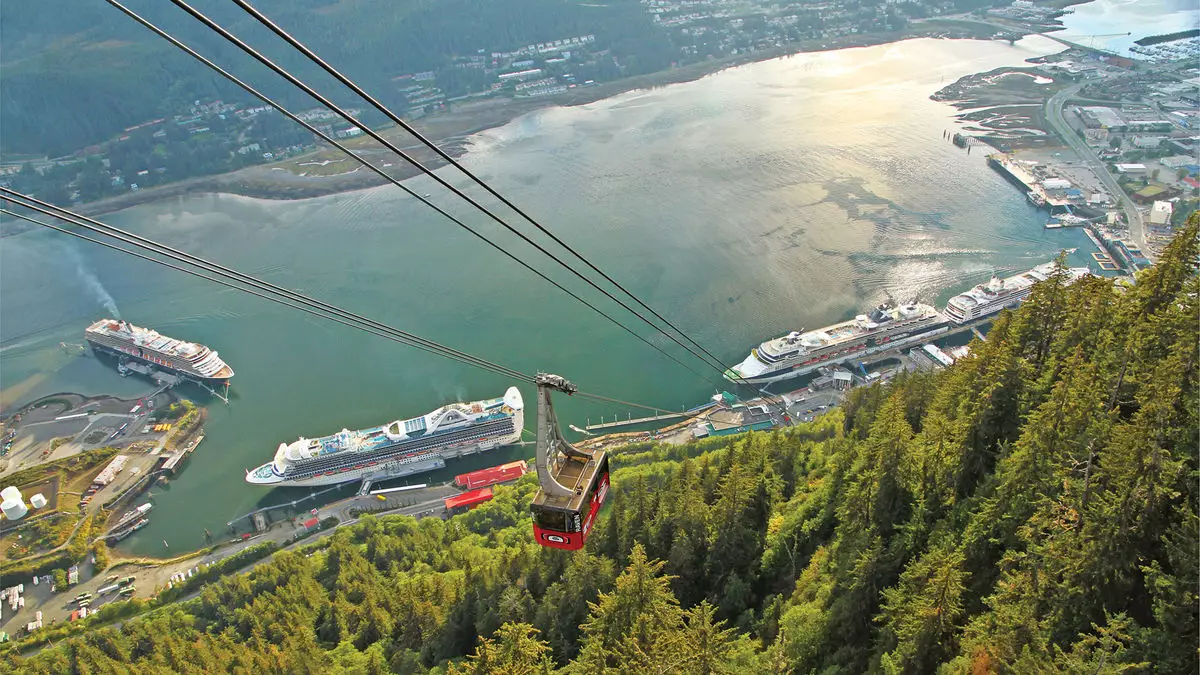The landscape of cruise tourism in Alaska is undergoing significant transformation. While some ports are navigating the complexities of community resistance, others are embracing opportunities to expand their facilities and services. This dichotomy illustrates the broader struggle within the industry to balance economic benefits against the need for community alignment. Leaders in the region, such as Russell Dick of the Huna Totem Corp., argue that the cruise industry must recognize that not all Alaskan communities harbor negative feelings towards cruise tourism. Instead, there is a strong appetite for further development and the economic benefits that come with it.
Emerging Ports and Economic Opportunities
Huna Totem has been at the forefront of developing port infrastructure in Alaska for two decades, culminating in the creation of Icy Strait Point. This site has redefined the cruise experience by immersing visitors in the Alaskan wilderness, offering activities ranging from wildlife excursions to thrilling zipline adventures. As new ports open—most notably the double-berth facility in Whittier and Port Klawock—it’s clear that the demand for alternative cruise destinations is on the rise. As Dick highlighted, the experience of Alaska extends well beyond Juneau, and many travelers may find value in exploring less-visited ports. This perspective challenges the cruise industry’s traditional focus on flagship ports and posits a need for a more diverse itinerary.
Carnival Corporation, one of the largest players in the cruise sector, has echoed these sentiments. Robert Morgenstern, the senior vice president of Alaska operations, identified the necessity for alternatives to Juneau, particularly as increasing passenger limits pose challenges for the city. This is a crucial recognition that tourism strategies must adapt to accommodate changing dynamics. However, finding engaging alternative ports is fundamental to attracting visitors. The development of attractive shore excursions can bolster the appeal of less popular destinations while redistributing the economic benefits of tourism throughout the region.
Morgenstern’s comments point to a broader economic landscape where communities rely heavily on tourism. Given the struggles faced by traditional industries such as timber and fishing, the significance of cruise tourism cannot be overstated. Communities like Prince Rupert are working diligently to enhance their shore excursions to improve visitor experiences and support local economies. This situation underscores the potential for cruise lines to foster positive relationships with smaller communities by investing in the development of appealing destinations.
The metrics of growth in Alaskan tourism—including a 15% rise in cross-gulf cruise traffic—illustrate the ongoing demand for cruise experiences. Julie Saupe, CEO of Visit Anchorage, pointed out that larger regions like South Central Alaska can absorb increased cruise traffic without overwhelming their communities. This capacity to manage visitor numbers effectively is vital in times when sensitivity towards tourism is paramount. The distribution of passengers across multiple ports mitigates congestion and fosters a more pleasant experience for visitors, ultimately benefiting the local economy.
The industry is at a crossroads, where it must reconcile the growth of cruise tourism with community perspectives. The potential for increased cross-gulf itineraries could emerge as an innovative solution in response to growing anti-cruise sentiments in southeastern ports. This evolution could represent a shift towards more sustainable tourism practices, where the focus becomes not just about filling ships but also about enriching the experiences of travelers across a variety of locales.
The future of cruise tourism in Alaska hinges on collaboration between cruise lines, local communities, and stakeholders. While the economic allure of cruise tourism is undeniable, respecting community sentiment is essential for sustainable growth. Alaska’s diverse ports offer unique opportunities for economic development, but it requires a concerted effort to ensure that all voices are heard. By fostering beneficial partnerships and exploring abundant alternatives, the cruise industry can expand its reach while contributing positively to Alaska’s vibrant tapestry of communities.


Leave a Reply